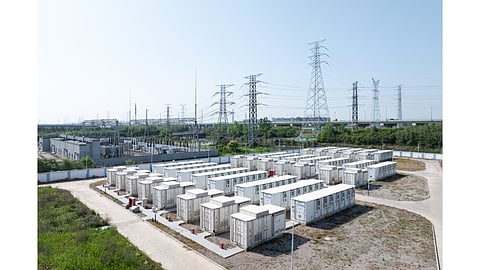

The new Spanish decree aims to enhance system resilience and supports storage, repowering, and electrification measures in the country
MITECO says under the decree, CNMC’s supervisory powers are expanded, and it streamlines procedures for hybrid and repowering projects
Distribution companies will face stricter timelines to respond to grid expansion and connection requests
As Spain targets 22.5 GW energy storage capacity by 2030 under the country’s Integrated National Energy and Climate Plan 2023-2030, the Ministry for Ecological Transition and the Demographic Challenge (MITECO) has given it a much-needed push with a Royal Decree (see Spain Set To Target 76 GW Solar PV Capacity By 2030 Under Approved NECP).
The Council of Ministers recently approved the decree aimed at increasing the resilience of the country’s electricity system. It incorporates several provisions from the Royal Decree-Law 7/2025 – also termed as ‘anti-blackout and pro-renewables’ – that failed to secure a majority in the Congress of Deputies in July this year.
With the new decree, Spain aims to boost system resilience and support the energy transition through energy storage, facility repowering, and faster electrification.
It strengthens supervision in the electricity sector by expanding the powers of the National Commission for Markets and Competition (CNMC). It requires quarterly public reports on voltage control and mandates a special inspection plan for supply restoration capacity, to be repeated every 3 years.
Spanish system operator Red Eléctrica will propose regulatory changes regarding voltage variation, power oscillation response, and network coordination within 3 to 6 months, followed by regulatory approval desired within 6 months.
The decree promotes hybrid projects that combine generation and storage on land already hosting energy generation projects, and simplifies permitting procedures.
To encourage electrification, it limits grid connection rights for new demand to 5 years to curb speculation and hoarding, and requires companies to identify their economic activity (CNAE code) when applying for connections. Distribution companies must also respond faster to network expansion requests, with deadlines ranging from 5 to 80 days depending on project complexity.
MITECO explains that the decree adopts the European definition of repowering, which refers to the renewal of facilities with improved technology. It now calls for a national roadmap to be prepared within 9 months to advance repowering efforts. This roadmap, aligned with European commitments, streamlines authorization for R&D platforms testing new generation or storage prototypes, allowing for quick equipment changes under a single license.
Additionally, it clarifies rules for shared evacuation infrastructure and commissioning processes for generation and storage facilities.
The Spanish Photovoltaic Association (UNEF) has welcomed the decree, stating that the sector had been demanding these measures, and that it also provides clarity for industrial development in the country.
“This boost to storage will allow for a more robust system and more competitive electricity prices for citizens and businesses, increasing the competitiveness of the Spanish industrial sector and attracting investment,” said UNEF CEO José Donoso.
